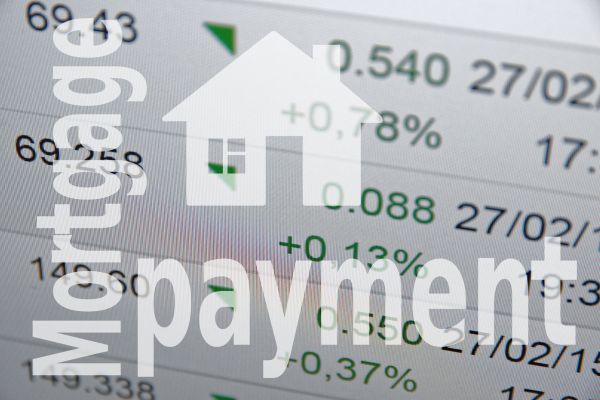When it comes to one of the most significant financial decisions in life—buying a home—the question of how long you’ll take to pay off your mortgage can be just as important as the home you choose. The debate between a 15 vs. 30 year mortgage isn’t new, but it’s as relevant as ever for today’s homebuyers. Both options offer distinct advantages, and understanding these differences can help you choose the mortgage term that best aligns with your long-term goals and financial situation.
Understanding the Basics of Mortgage Terms
Before diving into the specifics of a 15 vs. 30 year mortgage, it’s crucial to grasp what these terms actually mean. A mortgage term refers to the length of time you agree to pay back your home loan. A 15-year mortgage is structured so that the loan is completely paid off in 15 years, while a 30-year mortgage extends that repayment period over three decades.
The length of your mortgage term influences everything from your monthly payment amount to the total interest paid over the life of the loan. Therefore, this decision can have long-lasting financial implications that ripple through your budget, investment strategies, and future financial security.
Monthly Payments: A Key Difference
One of the most noticeable contrasts between a 15 vs. 30 year mortgage lies in the monthly payments. With a 30-year mortgage, your monthly obligation is typically lower because the loan balance is spread over a longer period. This feature can be appealing to first-time buyers or those who prefer more breathing room in their monthly budget.
Conversely, a 15-year mortgage compresses the same loan amount into half the time. As a result, the monthly payments are significantly higher. However, this doesn’t mean it’s a bad deal. In fact, the higher monthly payment can work in your favor in the long run, depending on your income and financial goals.
Total Interest Costs Over Time
While lower monthly payments can seem like the obvious win, it’s essential to evaluate the total interest paid over the life of the loan. This is where the 15-year option shines. With a shorter term, lenders typically offer lower interest rates. Coupled with fewer years of repayment, this means you’ll pay substantially less interest overall with a 15-year mortgage.
In contrast, the 30-year mortgage accumulates more interest simply because it takes longer to pay off. Even if the rate is only marginally higher, the extended timeline amplifies the total cost. Over three decades, this can add up to tens or even hundreds of thousands of dollars in additional payments.
Equity Building and Financial Flexibility
Another advantage of the 15-year mortgage is the speed at which you build home equity. Because you’re paying down the principal faster, you gain ownership in your home more quickly. This can be advantageous if you plan to sell, refinance, or tap into your home’s value later on.
On the flip side, the 30-year mortgage allows for greater financial flexibility. With lower monthly payments, you might have more room to invest elsewhere, build an emergency fund, or simply maintain a more comfortable lifestyle. The additional financial cushion can be a strategic advantage, especially if you’re navigating uncertain economic conditions or fluctuating income.
Income Stability and Risk Tolerance
Choosing between a 15 vs. 30 year mortgage also depends heavily on your income stability and overall risk tolerance. A 15-year mortgage demands a higher monthly commitment, which can be challenging if your income isn’t consistent. It’s a more aggressive approach that pays off quickly but offers less wiggle room if financial circumstances change.
On the other hand, a 30-year mortgage offers predictability and reduces monthly financial pressure. This makes it an attractive option for individuals who prefer to minimize risk or anticipate other significant expenses, such as college tuition or business investments, in the future.
Opportunity Cost and Investment Potential
There’s also an argument to be made for the opportunity cost of choosing a 15 vs. 30 year mortgage. If you opt for the longer term and invest the money you save on monthly payments into a retirement fund, stocks, or other investment vehicles, you might generate a higher return than the interest saved by paying off your mortgage early.
However, this strategy requires discipline and financial acumen. Not all investments yield guaranteed returns, and not everyone consistently invests the savings. Therefore, while a 30-year mortgage might offer more financial maneuverability, it also requires a proactive approach to maximize the potential benefits.
Lifestyle Considerations and Personal Goals
Beyond numbers, the choice between a 15 vs. 30 year mortgage also ties into your lifestyle preferences and personal goals. If becoming debt-free as soon as possible aligns with your values, the 15-year route can offer immense peace of mind. There’s a certain emotional benefit to knowing your home is paid off in a relatively short time.
Alternatively, if you’re more focused on preserving cash flow for other experiences—such as travel, hobbies, or starting a business—the 30-year mortgage might better support your desired lifestyle. The lower monthly payment can create opportunities to enjoy your money rather than committing most of it to your home loan.
Flexibility Within Each Option
It’s also worth noting that choosing a 30-year mortgage doesn’t lock you into paying it off slowly. Many lenders allow you to make extra principal payments without penalty. This means you can treat your 30-year loan like a 15-year mortgage by making larger payments when you’re financially able, while still retaining the option to scale back if needed.
In contrast, once you commit to a 15-year mortgage, you’re generally obligated to make those higher payments each month. The structure offers less flexibility in times of financial stress, which can be a concern during economic downturns or unexpected life events.
Making the Right Choice for Your Future
There’s no universal answer to whether a 15 vs. 30 year mortgage is better. The ideal choice depends on your unique financial situation, goals, and tolerance for risk. It requires a thorough evaluation of your current income, future earning potential, investment strategy, and overall lifestyle aspirations.
If you’re drawn to rapid equity building, lower total interest, and the satisfaction of debt freedom, a 15-year mortgage could be the right path. However, if you value financial flexibility, lower monthly commitments, and the ability to allocate funds elsewhere, the 30-year option may offer a better balance.
Conclusion: Aligning Your Mortgage Term with Your Life Goals
In the end, the decision between a 15 vs. 30 year mortgage comes down to more than just math. It’s a deeply personal choice that reflects your priorities, habits, and vision for the future. Whether you favor the fast-track payoff of a 15-year term or the extended comfort of a 30-year loan, the key is to make an informed decision based on a full understanding of the trade-offs involved.
Whichever path you choose, make sure it supports both your present lifestyle and your long-term financial security. With thoughtful planning and the right mortgage structure, your home can be more than just a place to live—it can be a powerful cornerstone of your financial future.



